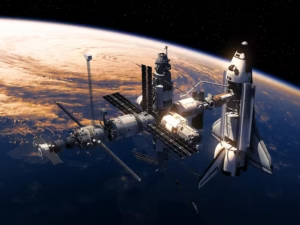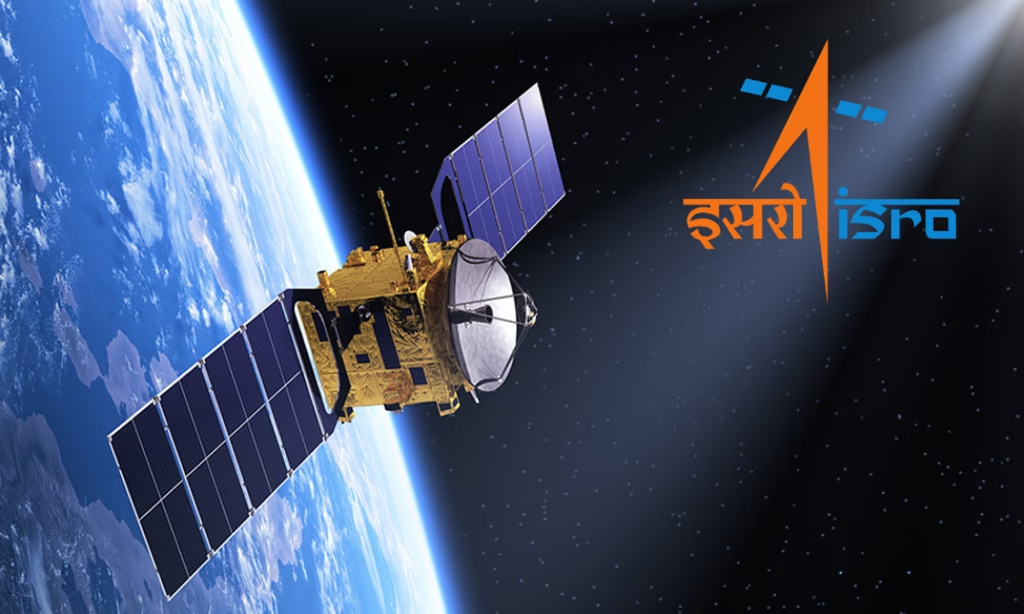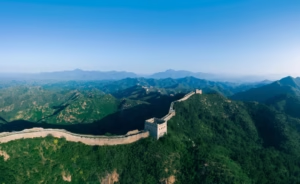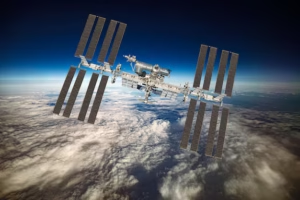Burj Khalifa: World’s Tallest Marvel and Iconic Sphere
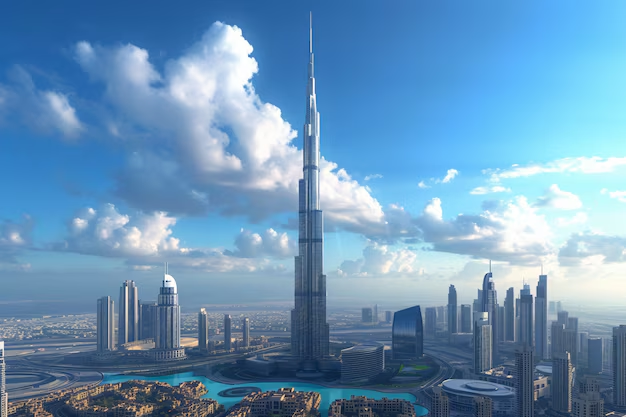
The Burj Khalifa, located in Dubai, United Arab Emirates, is not just the tallest building in the world; it is a symbol of human ambition, architectural genius, and engineering excellence. Rising majestically above the city skyline, this towering structure has captured the imagination of millions across the globe. In this article, we will explore the Burj Khalifa’s structure, capabilities, and popularity, providing a comprehensive overview of what makes this building a modern wonder.
Introduction to Burj Khalifa
The Burj Khalifa stands at a staggering height of 828 meters (2,717 feet), making it the tallest man-made structure ever built. It officially opened on January 4, 2010, after more than six years of construction that started in 2004. The building is located in Downtown Dubai, a rapidly growing district filled with skyscrapers, shopping malls, and entertainment venues.
Developed by Emaar Properties and designed by the renowned architectural firm Skidmore, Owings & Merrill, the Burj Khalifa has set new standards for what is possible in architecture and construction.
The Structure of Burj Khalifa
Architectural Design
The design of the Burj Khalifa is inspired by the shape of the Hymenocallis flower, native to the desert. The tower’s base is shaped like a Y, which helps to support the building’s immense height and withstand strong winds. This tripartite footprint reduces the forces on the tower, making it stable and durable.
The building’s exterior is clad with reflective glazing, aluminum, and textured stainless steel spandrel panels, giving it a sleek and futuristic look. The cladding is specially designed to withstand Dubai’s extreme summer heat and desert conditions.
Engineering Marvel
Constructing a building this tall came with extraordinary challenges. The engineers used a bundled tube design, which involves several reinforced concrete tubes connected to form a solid structure. This technique was crucial in distributing the immense wind and gravity loads.
At the core, a reinforced concrete shaft runs the entire height, providing strength and stability. Around it, columns and beams support the floors. The use of high-performance concrete was necessary to ensure the building’s strength and longevity, especially at such unprecedented heights.
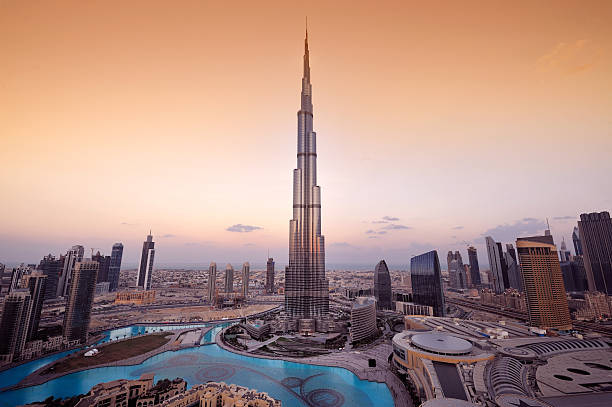
Floors and Elevators
The Burj Khalifa has 163 floors above ground and an additional 2 basement levels. The total floor area is around 309,473 square meters (3.33 million square feet).
The tower is equipped with 57 elevators and 8 escalators. Some of these elevators travel at speeds of up to 10 meters per second (about 22 mph), making them some of the fastest in the world. The elevators use advanced technology to optimize travel times and energy use.
https://sypertimes.com/meghalaya-the-abode-of-clouds-geography-and-history/
Capabilities of Burj Khalifa
Mixed-Use Functionality
The Burj Khalifa is not just a tall building; it is a vertical city. It houses a mix of residential, commercial, and leisure spaces. There are luxury apartments, corporate offices, and the Armani Hotel, which occupies several floors and is known for its elegance and exclusivity.
The tower also includes observation decks on the 124th, 125th, and 148th floors, offering breathtaking views of Dubai and beyond. These decks attract millions of visitors every year, making the Burj Khalifa a top tourist destination.
Environmental and Safety Features
Despite its size, the Burj Khalifa is designed with sustainability in mind. The building uses a condensation collection system that gathers water from the air conditioning units, providing around 15 million gallons of water per year for landscaping and other uses.
The building’s shape reduces wind forces, minimizing sway and improving comfort for occupants. It also has a sophisticated fire safety system, with multiple emergency staircases, refuge floors, and fire-resistant materials.
Technological Innovations
Burj Khalifa incorporates many cutting-edge technologies. Its elevators use a double-deck system to increase capacity and speed. Intelligent building management systems monitor and control lighting, temperature, and security.
The lighting system on the tower’s exterior features programmable LED lights that create spectacular light shows during holidays and special events, making it an icon of celebration in Dubai.
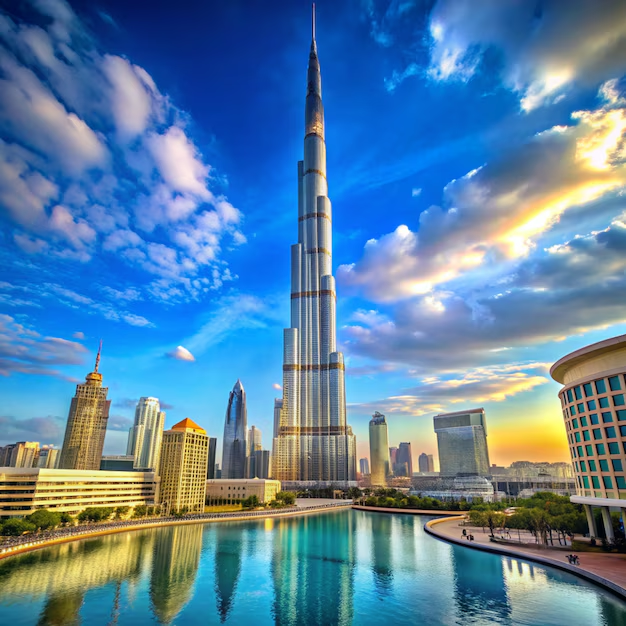
Popularity and Global Impact
A Tourist Magnet
Since its opening, the Burj Khalifa has become one of the most visited landmarks in the world. Tourists come from all corners of the globe to experience the thrill of standing atop the world’s tallest building. The observation decks provide panoramic views that stretch for miles, especially spectacular at sunset and night.
Besides sightseeing, many visitors enjoy fine dining experiences at the restaurants within the tower, such as At.mosphere on the 122nd floor, one of the highest restaurants in the world.
Cultural Symbol
The Burj Khalifa symbolizes Dubai’s rapid development and ambition to become a global city. It represents the UAE’s economic progress and openness to innovation. The tower frequently features in movies, advertisements, and media worldwide, further boosting Dubai’s international profile.
During global events, like New Year’s Eve, the Burj Khalifa hosts one of the most spectacular fireworks and light shows. These displays are broadcast worldwide and attract huge crowds, adding to its fame.
Records and Achievements
The Burj Khalifa holds numerous world records, including:
- Tallest building in the world
- Highest number of stories in a building
- Highest occupied floor
- Highest outdoor observation deck
- Elevator with the longest travel distance
These records make it a benchmark for future skyscraper projects and a case study for architects and engineers.
Challenges Faced
Building the Burj Khalifa was not without challenges. The extreme height meant dealing with strong winds and temperature variations. Transporting materials to such heights required innovative logistics. Worker safety was a priority, with thousands of construction workers involved at any time.
Moreover, the building’s maintenance and cleaning require specialized equipment and crews, especially for the glass facade that must withstand desert dust and heat.
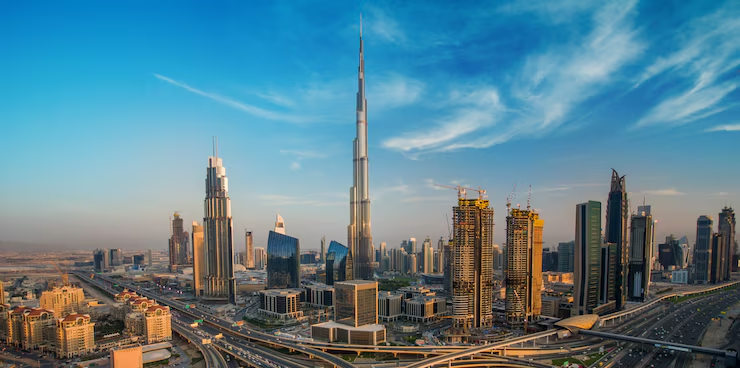
Conclusion: The Burj Khalifa’s Legacy
The Burj Khalifa is more than just a skyscraper; it is a testament to what humans can achieve with vision, technology, and perseverance. It has redefined the possibilities of modern architecture and inspired other cities around the world to dream bigger.
Whether you are fascinated by engineering, architecture, or just love travel and adventure, the Burj Khalifa offers something extraordinary. It stands as a beacon of modernity, luxury, and human achievement, continuing to inspire generations to reach for the sky — literally.
https://indianexpress.com/article/explained/explained-global/burj-khalifa-billboard-new-year-9095433
